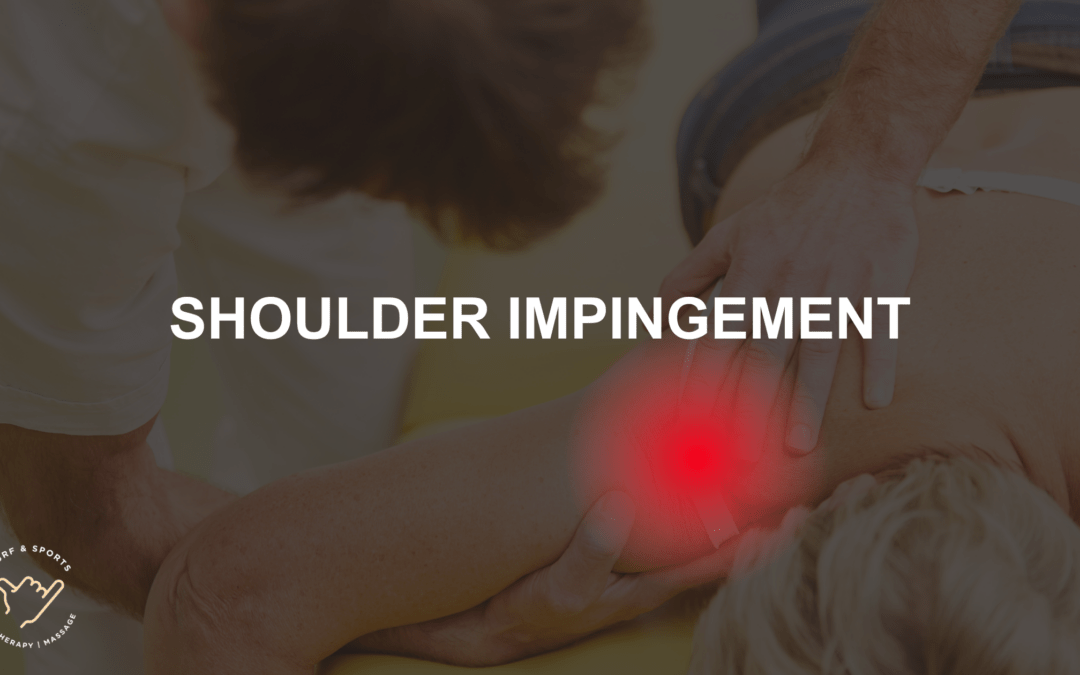Welcome to a guide specifically crafted for Australians seeking shoulder impingement treatment. If you’ve been struggling with shoulder pain relief, you’re likely keen to learn how myotherapy can help in the rotator cuff rehabilitation and shoulder impingement rehabilitation processes. It’s a promising alternative that targets the soft tissue elements causing discomfort and restriction. By employing hands-on techniques, myotherapy enables a pathway to restore the functionality of your shoulder, too, without invasive procedures.
Myotherapy is a form of manual therapy that zooms in on the muscular and skeletal issues contributing to your pain. It’s not just about temporary relief; it’s about healing and teaching your body to move in healthier ways. Whether you’re an athlete dealing with an overused shoulder joint or you’ve simply woken up with a stiff and sore shoulder, myotherapy offers a way forward. Let’s delve into this treatment’s principles and its effectiveness in managing shoulder impingement.
Understanding Shoulder Impingement and Myotherapy’s Role
If you’re struggling with shoulder pain or discomfort, understanding the condition and its treatments is the first step towards recovery. Shoulders are complex joints, and when they’re hindered by impingement, you might feel it with every lift, reach, or stretch. Let’s delve into the specifics to help you navigate towards better shoulder health.
Identifying the Signs and Symptoms of Shoulder Impingement
The symptoms associated with shoulder impingement are your body’s way of flagging a potential problem. You may notice a sharp pain when raising your arm or a dull ache that lingers long after movement. These shoulder impingement symptoms can indicate that the tendons or bursa in your shoulder are experiencing undue pressure. If you’re sensing weakness during arm movements or discomfort that disrupts your sleep, it’s likely time to explore shoulder impingement diagnosis options.
How Myotherapy Addresses Shoulder Impingement Causes
Understanding the underlying shoulder injury causes is essential to effective treatment. Myotherapy stands out for its targeted approach to address these issues, including overuse, muscle imbalances, and poor posture. By integrating myotherapy benefits such as massage techniques, dry needling, and a tailored regimen of shoulder impingement exercises, myotherapists aim to ease pain and restore function holistically, often reducing the need for more invasive treatments.
Comparing Myotherapy to Other Shoulder Impingement Treatments
When stacked against other treatment options, myotherapy offers a non-invasive alternative that prioritises active recovery. Unlike surgical procedures that come with extended downtime, myotherapy focuses on accelerating healing through increased blood flow and muscle repair. The blend of therapeutic techniques also equips you with strategies to maintain shoulder health and prevent future injuries.
Myotherapy doesn’t just relieve your symptoms; it’s an investment in your body’s long-term wellbeing, teaching it the resilience and strength to ward off potential shoulder issues.
Shoulder Impingement Rehabilitation through Myotherapy Techniques
The recovery path from shoulder impingement requires a nuanced approach that can only be provided by strategic myotherapy interventions. As you embark on a journey towards shoulder mobility restoration, it’s essential to recognize that each technique within the myotherapy discipline is designed to target the areas impeding your movement and causing pain.
Myotherapists are adept in a variety of myotherapy strategies that are critical for the successful rehabilitation of shoulder impingement. These practitioners utilize soft tissue manipulation to gently ease the tension that contributes to your discomfort, employing techniques that directly influence the condition of the rotator cuff.
By engaging in focused rotator cuff exercises, you not only work towards alleviating current symptoms but also actively prevent potential future shoulder injuries. Such exercises are designed not only to strengthen the muscles but also to re-educate your body on proper movement mechanics, ensuring the longevity of your shoulder’s health.
Another cornerstone of shoulder impingement rehabilitation is the application of myofascial release. This practice, an integral part of myotherapy, aims to liberate restrictions within fascial layers, fostering an environment conducive to healing and increased range of motion.
- Myofascial Release
- Joint Mobilization
- Strength Training
- Movement Re-education
Furthermore, joint mobilization techniques are employed to restore normal joint function and to reduce pain. Strategically applied, these movements can significantly improve your shoulder’s functionality and expedite the process of recovery.
With a clear emphasis on shoulder mobility restoration, myotherapy provides a holistic approach to your rehabilitation. Through the combination of custom rotator cuff exercises and therapeutic techniques, you’re not merely recovering—you’re improving your overall shoulder health for a more active and pain-free future.
Conclusion
In wrapping up our discussion on shoulder impingement rehabilitation, the spotlight has clearly shone on the versatility and myotherapy effectiveness as a potent force in combating the limitations of shoulder discomfort. The non-invasive nature of myotherapy, combined with its proven success in shoulder pain management, stands out as a cornerstone in the landscape of therapeutic options. The relief it brings extends beyond mere pain alleviation, fostering enhanced joint mobility and contributing to a deeper understanding of shoulder mechanics.
Summarising Myotherapy Benefits for Shoulder Pain Relief
Myotherapy offers an array of remedies crucial to the healing and strengthening process of a shoulder impingement injury. With a focus on individual needs, professional myotherapy services are instrumental in releasing tension from affected muscles, correcting imbalances, and improving range of movement. It’s a holistic approach that promotes not only recovery but also the preventative measures necessary to safeguard against future injuries.
When to Seek Professional Myotherapy for Shoulder Injury
Identifying the right time to seek out shoulder injury recovery support through myotherapy is pivotal in averting prolonged discomfort or potential exacerbation of injury. If you’re contending with persistent shoulder pain that hampers your daily activities, or if you notice a marked decrease in shoulder mobility that does not improve with basic care, it’s time to consider professional intervention. Myotherapy stands as a beacon of hope for those yearning to return to their pre-injury lifestyle, offering both restorative and preventive therapeutic routes designed around your unique physiological needs.

